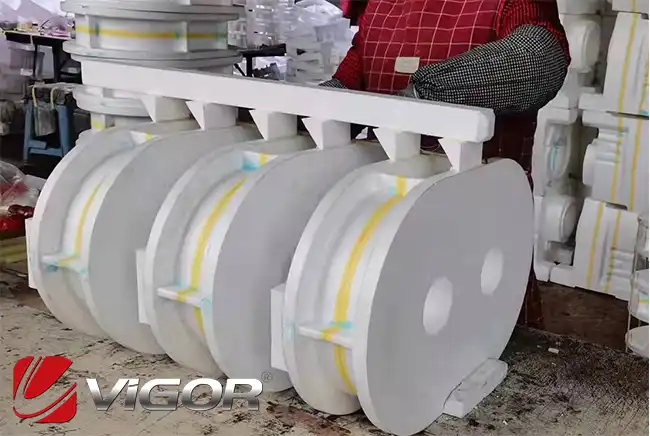
Knowledge
What is Lost Foam Casting?
Lost-foam casting, sometimes known as the expanded polystyrene process, is a unique technique in the field of metal casting. This creative approach produces intricate metal components using a foam design that evaporates as molten metal is put into the mold. The procedure is essential for creating elaborate and sophisticated designs that could be difficult to cast using conventional techniques.
What Is Lost-Foam Casting?
Lost-foam casting, also known as evaporative casting or the expanded polystyrene process, is a sophisticated technique for crafting intricate metal components. This procedure makes use of an expanded polystyrene (EPS) foam mold. The foam pattern may be cut from a foam block, carved, or produced using a process akin to injection molding. The foam mold is then given a ceramic refractory covering to isolate it from the sand surrounding it in the mold frame. Sand holds the EPS mold in place as molten metal is poured into it. As the foam evaporates, the required metal shape is left behind.
What Is the Origin of Lost-Foam Casting?
Lost-foam casting has its origins in a patent that H.F. Shroyer filed in April 1956. He proposed the idea of embedding foam patterns within green sand to cast metal. This creative method required cutting a pattern from expanded polystyrene (EPS) and supporting it with bonded sand throughout the casting process. Shroyer's creative strategy, which was formally patented in 1958, served as the basis for lost-foam casting, often known as the whole-mold technique.
What Is the Importance of Lost-Foam Casting in Manufacturing?
Lost-foam casting is important in the industrial industry because it uses less energy than sand casting and has a smaller carbon impact. Additionally, it reduces waste production and metal consumption. This helps to create a cleaner and more productive industrial environment.
How Does Lost-Foam Casting Work?
Lost-foam casting first involves creating a pattern of the desired shape from expanded polystyrene (EPS) foam. The foam pattern is then placed within a mold box and packed on all sides with sand, leaving a passage through which to pour molten metal onto the foam. The polystyrene vaporizes due to the heat from the molten metal, which shapes the casting inside the mold. Intricate and sophisticated metal items can be produced with amazing precision by ejecting the casting from the mold chamber after it has been formed.
What Makes Lost-Foam Casting Stand Out Among Other Types of Casting?
Lost-foam casting has definite advantages over conventional casting techniques like sand casting or investment casting. Complex shapes and elaborate designs are possible that could be difficult with other approaches. Lost-foam casting can also reduce material waste and streamline manufacturing procedures, making it more effective and economical. To learn more, see our guide on the Types of Casting.
Vigor as the most professional machinery and equipment manufacturer, we can choose different casting processes according to your requirements for product production, after the completion of production, we will carry out 100% testing in accordance with customer requirements and industry standards to ensure that the product quality can meet customer needs. If you are interested in Vigor's mechanical products, please do not hesitate to get in touch with us to get the best technical service and the best quality products.




